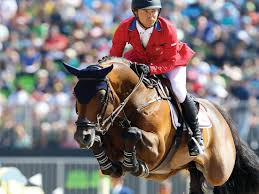How Horse Jump Equipment Is Shaping Modern Riding
In the ever-evolving realm of equestrian sports, horse jump equipment has undergone dramatic changes that are transforming both competitive and recreational riding. The industry’s commitment to rider and horse safety is matched by an emphasis on equipment innovation, using advanced materials and thoughtful engineering. Modern solutions, such as jump caddies, have also streamlined daily barn operations, making setup and storage an integral part of the rider’s experience. With these advancements, today’s equestrian arenas are safer, more customizable, and better equipped to support peak athletic performance.
Driven by new technologies and a focus on sustainable production, manufacturers are delivering equipment that’s lighter, safer, and longer-lasting than ever before. Whether at championship events or in everyday training, these products help maintain the highest level of horse welfare and rider achievement. This rapid evolution is bridging practical needs with innovation, allowing more riders than ever to access top-quality gear suitable for every level of the sport.
Innovative Materials in Jump Design
The transition from traditional wood to modern materials is revolutionizing the jump equipment industry. Today’s show jumps commonly feature high-grade aluminum, premium plastics, and weather-resistant composite blends that are both sturdy and lightweight. These upgrades drastically reduce maintenance and allow for easier adjustments or transportation of jumps by individuals, making them especially appealing for riding schools, clubs, and private barns.
For example, Wordley Martin has been at the forefront of this shift, developing aluminum schooling jump wings and poles that withstand rigorous daily use. Their products demonstrate how innovatively engineered materials can extend the life of equipment while keeping riders and horses safe. Likewise, advances in plastics have enabled brighter, more durable finishes that withstand the elements, thereby reducing the need for frequent replacements.
Enhancing Safety Through Technology
Safety remains a guiding principle in the design of equestrian equipment. Today, breakaway jump cups and rails are standard at the highest levels of competition. These innovations ensure poles dislodge easily on impact, minimizing the risk of injury. Even at local levels, the inclusion of such safety systems provides peace of mind for both trainers and riders.
Another technical advancement is the application of biomechanical tracking, using motion capture and inertial measurement units during training. With these systems, trainers can pinpoint areas of potential injury and adjust routines accordingly. According to Horse & Hound, integrating such safety technologies has helped bring injury rates down and set new standards for horse welfare in disciplines like show jumping.

Customization and Aesthetics
Modern jumps are no longer just functional; they’re statement pieces that can be tailored for any level of competition, special event, or brand. Custom graphics, sponsor logos, and distinctive color schemes help competitions create a unique identity and a more engaging spectator experience. Insights from leading barn managers note that the integration of eye-catching obstacles directly contributes to the pageantry of the sport, making every event more memorable and attractive to sponsors and audiences alike.
read more : The Difference Between Cheap Acrylic and Quality Perspex
Sustainability in Equipment Manufacturing
With environmental stewardship in mind, many manufacturers are incorporating recycled and sustainable materials into their products. By incorporating composites from post-consumer plastics or renewable sources, the equestrian world is reducing waste while still delivering high-performing, aesthetically pleasing products. Leading brands also minimize waste by designing modular equipment that allows for simple repairs, reducing the need for full replacements and further lowering environmental impact. The equestrian industry’s sustainable approach is aligning it with broader efforts in sports to go greener, as covered by The New York Times.
Impact on Horse and Rider Performance
Advanced jump equipment has a direct impact on training results and ring performance. Lightweight materials enable quicker adjustments mid-lesson, while ergonomic safety features enhance rider confidence and horse comfort. The versatility of jump heights and obstacle complexity allows each rider to tailor their training to fit their personal and equine goals. With the emergence of smart measuring systems and feedback devices, precision in training is continually improving, laying the groundwork for better outcomes at every competitive level.
Future Trends in Jump Equipment
Looking forward, smart technology is poised to transform the way jump equipment interacts with riders and horses. The integration of sensor technology promises to deliver real-time performance feedback, measuring factors such as trajectory, timing, and impact force. Data analytics, powered by artificial intelligence, may soon enable trainers and riders to develop highly personalized conditioning plans, thereby preventing overuse injuries before they occur. As innovation accelerates, expect to see even more personalized, connected, and athlete-centered gear in the arena.
Conclusion
The continued innovation in horse jump equipment marks a new era in equestrian sports—one that prioritizes safety, performance, and sustainability. By leveraging cutting-edge materials, technology, and design, the industry is keeping pace with the needs of modern riders and their horses. As advancements unfold, riders of all backgrounds will benefit, raising both the standard and spirit of the sport for generations to come.

